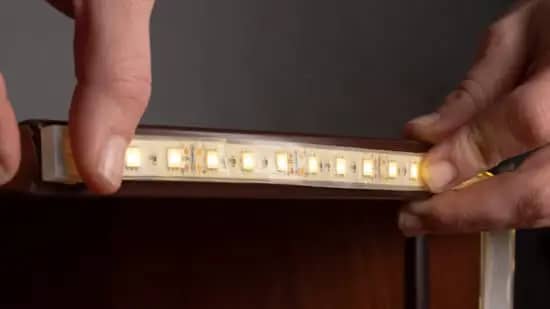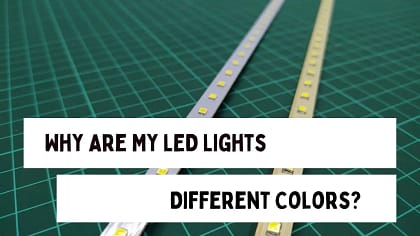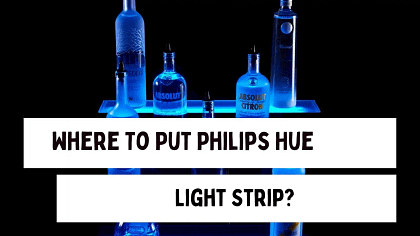LED light strips are flexible and colorful devices that can create amazing lighting effects in your home. But sometimes the light is not evenly distributed, and you can see bright dots or spots along the strip.
This can ruin the aesthetic and the mood of your lighting, and make it look cheap and unprofessional. And no one wants that!
Thus, this post should help you prevent those nasty light spots in your strip lights. I found using diffusers, reflective surfaces and backdrops do the trick.
What Causes Light Spots on an LED Light Strip Anyway?
Hear me out!
Light spots on an LED light strip are caused by the individual LEDs that make up the strip. Each LED is a tiny light source that emits a certain amount of light in a certain direction.
When the LEDs are close together, they can blend and create a smooth and uniform light. But when the LEDs are far apart, they can create gaps and shadows between them, and produce visible dots or spots of light.
The distance between the LEDs depends on the type and quality of the LED light strip. Some strips have more LEDs per meter than others, and some have higher quality LEDs than others. The more LEDs and the higher quality LEDs you have, the less likely you are to see light spots on your LED light strip.
How to Prevent Light Spots on an LED Light Strip?
There are several ways to prevent light spots on an LED light strip, depending on your budget, preference, and skill level.
Here are some of the options you can try: No worries I tried them out myself and they work just fine.
Use a Higher Density LED Light Strip
One of the easiest ways to prevent light spots on an LED light strip is to use a higher density LED light strip.
These has more LEDs per meter than a lower density strip, producing a more even and consistent light.
For example, a 60 LED/meter light strip will have more light spots than a 120 LED/meter light strip, and a 120 LED/meter light strip will have more light spots than a 240 LED/meter light strip.
A higher density LED light strip will also have a higher brightness and a higher power consumption than a lower density strip, so consider these factors when choosing the right strips for your project.
You also need to make sure that your LED light strip is compatible with your LED controller and power supply, and that you have enough space and ventilation for your LED light strip.
Use a Diffuser or a Cover
This is my favorite tip: try using diffuser or a cover.
A diffuser or a cover is a material or a device that can scatter or soften the light from the LED light strip, and create a more uniform and smooth light.
This cover can also protect the LED light strip from dust, moisture, and damage, and enhance the appearance and the durability of your LED light strip.
There are different types and styles of diffusers and covers that you can use for your LED light strip, such as:
- A frosted or a milky plastic tube or strip that can slide over or stick to the LED light strip.
- Silicones, rubber tubes or strips that can wrap around or adhere to the LED light strip.
- An aluminum or a metal channel or profile that can house the LED light strip.
You can find diffusers and covers for your LED light strip online or in local stores, or you can make your own using materials like paper, fabric, or wood.
Use a Reflective Surface or a Backdrop
Don’t forget you can use reflective surface or a backdrop.
A reflective surface or a backdrop is a material or a device that can reflect or absorb the light from the LED light strip, and create a more diffuse and ambient light.
These can also add depth and dimension to your LED light strip, and make it look more professional and attractive.
You can use reflective surfaces and backdrops for your LED light strip by placing them behind, above, or below the LED strip, or by attaching them to the light strip.
Conclusion
LED light strips are flexible and colorful devices that can create amazing lighting effects in your home. Yet, some some light you can see bright dots or spots along the strip. This can ruin the aesthetic and the mood of your lighting, and make it look cheap.
I found using a higher density LED light strip, a diffuser or a cover, or a reflective surface or a backdrop to prevent light spots on your strips.





